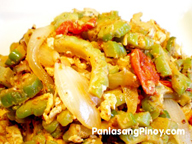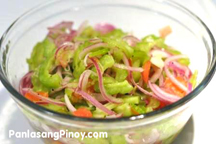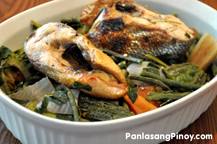- News Front Page
- Uncategorized
- Headline News
- Filipino Calgarian
- Business
- Pinoy Stories
- Community News
- Publisher's Note
- The Main Ingredient
- Views and Opinions
- Maikling Kwento
- Alberta News
- OFW – Month
- Travel News
- Health and Lifestyle
- Pinoy Toons
- Pinoy Spirit
- Entertainment
- The Philippine Lawyer
- Horoscope
- Greetings
- About Us
- Greetings From the Prime Minister
- Greetings from the President of the Philippines
- Greetings from the Premier of Alberta
- Greetings from the Mayor of Calgary
- Advertise With Us
- Disclaimer
- Subscription
Publisher's Note
- Publisher’s Note
 It was 22 years ago when I arrived in Canada and chose Calgary, Alberta to be my home. Leaving my family and friends behind, it was a new adventure for me to be in a new country without knowing anyone. That was the time I looked for a Filipino community paper and never found any, [...]
It was 22 years ago when I arrived in Canada and chose Calgary, Alberta to be my home. Leaving my family and friends behind, it was a new adventure for me to be in a new country without knowing anyone. That was the time I looked for a Filipino community paper and never found any, [...]
Visitors to Pinoytimes
Page added on July 28, 2013
Kuya Bong’s Kusina
by F. V. Decena
Ampalaya (Bitter Melon) with a scientific name Momordica charantia, is a climbing vine and the tendrils of which grow up to 20 centimeters long. This herbal plant belongs to the family of Cucurbitaceae, and it is a tropical as well as a subtropical vine. It is commonly grown and cultivated throughout the Philippines although wild forms can be found and it is also abundant in many regions in Asia, East Africa, the Carribean and South America and comes in a variety of shape and sizes. Ampalaya leaves are heart-shaped, which are 5 to 10 centimeters in diameter. The fruits of the ampalaya vine are fleshy green with pointed ends at length. It can never be mistaken for any other variety because its ribbed and wrinkled surface had always been ampalaya’s distinct physical structure. The bitter taste of the ampalaya fruit had also been the distinguishing factor from the rest of the fruits with medicinal value, and this is due to the presence of a substance known as momorcidin.
Ampalaya contains a mixture of flavanoids and alkaloids make the Pancreas produce more insulin that controls the blood sugar in diabetics. Aside from Ampalaya’s medicinal value, it is good source of vitamins A, B and C, iron, folic acid, phosphorous and calcium. Ampalaya is also rich in antioxidants that protect the cells of the body from damage of free radicals (metabolic by-products, usually waste).
The effectiveness of Ampalaya as an herbal medicine has been tried and tested by many research clinics and laboratories worldwide. In the Philippines, the Department of Health has endorsed Ampalaya as an alternative medicine to help alleviate various ailments including diabetes, liver problems and even HIV. Aside from these, ampalaya also helps treat skin diseases and cough. Its herbal value extends to increasing the sterility of women, in parasiticide, antipyretic, and has purgative functions, as well. Note: In large dozes, pure Ampalaya juice can be a purgative and abortifacient.
Herbal Benefits of Ampalaya:
• Good for rheumatism and gout
• And diseases of the spleen and liver
• Aids in lowering blood sugar levels
• Helps in lowering blood pressure
• Relives headaches
• Disinfects and heals wounds & burns
• Can be used as a cough & fever remedy
• Treatment of intestinal worms, diarrhea
• Helps prevent some types of cancer
• Enhances immune system to fight infection
• For treatment of hemorrhoids
• Is an antioxidant and parasiticide
Ginisang Ampalaya Recipe
Ingredients
- 2 pieces ampalaya, cleaned and cut into thin slices
- 1 tbsp garlic, minced
- 1/2 tsp ground black pepper
- 2 tbsp salt
- 2 raw eggs
- 18 ounces luke warm water
- 1 large tomato, sliced
- 1 large onion, sliced
- 3 tbsp cooking oil
Cooking Procedure
- Place the ampalaya in a large bowl
- Add salt and luke warm water then leave for 5 minutes
- Place the ampalaya in a cheese cloth then squeeze tightly until all liquid drips
- Heat the pan and place the cooking oil
- Sautee the garlic, onion, and tomato
- Add the ampalaya mix well with the other ingredients
- Put-in salt and pepper to taste
- Beat the eggs and pour over the ampalaya then let the eggs cook partially
- Mix the egg with the other ingredients
- Serve hot. Share and Enjoy!
Number of servings (yield): 4
Ampalaya Salad Recipe
Ingredients
- 1 medium bitter gourd (ampalaya), thinly sliced
- 1 medium red onion, thinly sliced
- 1 medium Roma tomato, diced and seeds removed
- 1/2 cup vinegar
- 1/2 teaspoon ground black pepper
- 1 teaspoon granulated white sugar
- 1 tablespoon salt (for rubbing)
- Extra salt to taste
Cooking Procedure
- Rub the salt all over the sliced bitter gourd. Let it stay for 30 minutes.
- Remove the salt by quickly washing the gourd with running water. Drain the excess liquid.
- Combine vinegar, ground black pepper, sugar, and extra salt (if needed) in a bowl. Stir.
- Put-in the bitter gourd, onion, and tomato in a bowl. Mix well.
- Cover the bowl with a cling wrap and then refrigerate for about 3 hours.
- Serve as a side dish for fried fish.
- Share and enjoy!
Number of servings (yield): 3
Dinengdeng Recipe
Ingredients
- 1 whole milk fish, sliced and grilled
- 2 to 3 cups malunggay (moringa) leaves, cleaned
- 2 cups squash flower
- 12 to 15 pieces small to medium sized okra
- 1 bundle string beans, sliced into 3 inch pieces
- 2 pieces medium ampalaya (bitter gourd), cored and sliced
- 2 to 3 tablespoons bagoong isda (unprocessed fish sauce)
- 1 knob ginger, sliced
- 2 medium tomato, chopped
- 1 medium onion, chopped
- 3 cups water
Cooking Procedure
- Bring water to a boil in a large cooking pot.
- Add the ginger, onion, and tomato. Cook covered for 5 minutes.
- Pour-in the bagoong isda. Stir.
- Add okra and string beans. Stir and add the ampalaya. Cook in medium heat for 7 to 10 minutes.
- Put-in the squash flower and malunggay leaves. Cook for 3 to 5 minutes.
- Add the grilled milk fish. Let it stay for 3 to 5 minutes to add flavor to the dish.
- Serve. Share and enjoy!
RELATED STORIES
LATEST HEADLINES
- ISKWELAHANG PILIPINO (IP) RONDALLA OF BOSTON WINS THE HEARTS OF CALGARIANS
- Pinay doctor joins Medicus Family Clinic and Pharmacy
- Multicultural Ethnic Media round table with Minister of Finance Joe Ceci together with Minister of Social Services Irfan Sabir
- Trans Mountain Pipeline keeps Canada working
- Facilitating travel to Canada while keeping Canadians safe
COMMUNITY NEWS
 A new way forward for some immigration application processing times
A new way forward for some immigration application processing times Calgary Stampede 2018 Poster
Calgary Stampede 2018 Poster Alberta celebrates first Philippine Heritage Month
Alberta celebrates first Philippine Heritage Month UPAAA Welcomes New Philippine Consul General
UPAAA Welcomes New Philippine Consul GeneralPINOY STORIES
 Duterte signs National ID System Act
Duterte signs National ID System Act- Holy Week practices in the Philippines
PINOY SPIRIT
HAVE YOUR SAY
Lorem ipsum dolor sit amet, consectetur adipiscing elit, dolor sit ipsum.PROMOTIONAL BLOCK
Lorem ipsum dolor sit amet, consectetur adipiscing elit, dolor sit ipsum.TRAVEL NEWS
PINOY TOONS
Tags
Archives




















